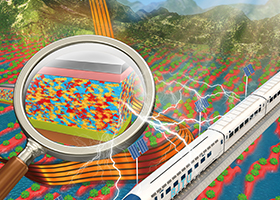High-Efficiency Organic Photovoltaics
A special issue of Energies (ISSN 1996-1073). This special issue belongs to the section "A2: Solar Energy and Photovoltaic Systems".
Deadline for manuscript submissions: closed (31 October 2022) | Viewed by 17711

Special Issue Editors
Interests: orgnaic photodetectors; organic solar cells
Special Issues, Collections and Topics in MDPI journals
Special Issue Information
Dear Colleagues,
Organic photovoltaics (OPVs) have attracted extensive attention due to their advantages of low cost, environmental friendliness, flexibility and large-area preparation. Benefiting from materials synthesis and device engineering, great progress has been achieved for single layer bulk heterojunction OPVs with a simple fabrication process. At present, further improving the performance of single layer bulk heterojunction OPVs is still a major goal in this region.
The synthesis of highly efficient organic photovoltaic materials and interfacial layer materials is the cornerstone to improve the performance of OPVs. In recent years, emerging as a new material in the OPVs filed, nonfullerene materials have attracted intense attention due to their excellent optical absorption ability, easily tunable chemical structures and energy levels. From the device engineering side, ternary OPVs, including the blends of two donors/one acceptor or one donor/two acceptors with complementary absorption spectra, constitute an increasingly promising approach.
This Special Issue focuses on the latest advancements realized in the field of OPVs, including fundamental investigations of working mechanism and exciton/charge carrier dynamic process, industrialization-oriented researches, such as semitransparent OPVs, thick-film OPVs and so on.
We invite papers on recent developments of OPVs from materials innovation and device engineering sides, as well as reviews relevant to the future development direction and application prospects of OPVs.
Prof. Dr. Fujun Zhang
Dr. Xiaoling Ma
Guest Editors
Manuscript Submission Information
Manuscripts should be submitted online at www.mdpi.com by registering and logging in to this website. Once you are registered, click here to go to the submission form. Manuscripts can be submitted until the deadline. All submissions that pass pre-check are peer-reviewed. Accepted papers will be published continuously in the journal (as soon as accepted) and will be listed together on the special issue website. Research articles, review articles as well as short communications are invited. For planned papers, a title and short abstract (about 100 words) can be sent to the Editorial Office for announcement on this website.
Submitted manuscripts should not have been published previously, nor be under consideration for publication elsewhere (except conference proceedings papers). All manuscripts are thoroughly refereed through a single-blind peer-review process. A guide for authors and other relevant information for submission of manuscripts is available on the Instructions for Authors page. Energies is an international peer-reviewed open access semimonthly journal published by MDPI.
Please visit the Instructions for Authors page before submitting a manuscript. The Article Processing Charge (APC) for publication in this open access journal is 2600 CHF (Swiss Francs). Submitted papers should be well formatted and use good English. Authors may use MDPI's English editing service prior to publication or during author revisions.
Keywords
- Organic photovoltaics
- Ternary strategy
- Semitransparent OPVs
- Thick-film OPVs
Benefits of Publishing in a Special Issue
- Ease of navigation: Grouping papers by topic helps scholars navigate broad scope journals more efficiently.
- Greater discoverability: Special Issues support the reach and impact of scientific research. Articles in Special Issues are more discoverable and cited more frequently.
- Expansion of research network: Special Issues facilitate connections among authors, fostering scientific collaborations.
- External promotion: Articles in Special Issues are often promoted through the journal's social media, increasing their visibility.
- e-Book format: Special Issues with more than 10 articles can be published as dedicated e-books, ensuring wide and rapid dissemination.
Further information on MDPI's Special Issue policies can be found here.






